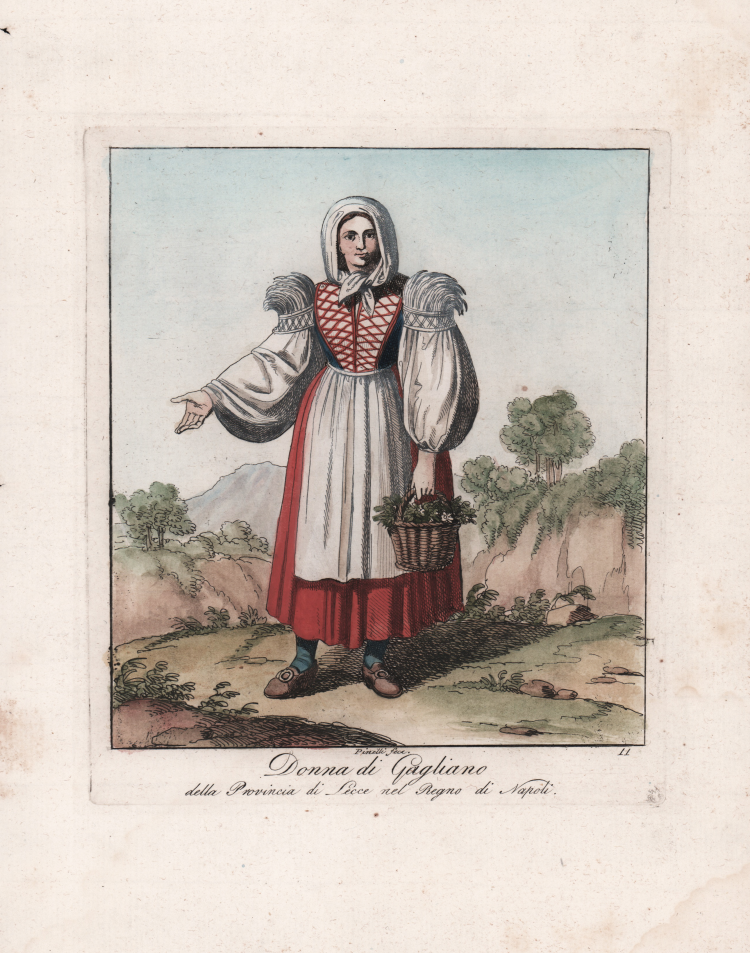


| Reference: | S5415 |
| Author | Bartolomeo PINELLI |
| Year: | 1814 |
| Zone: | Gagliano del Capo |
| Printed: | Rome |
| Measures: | 167 x 200 mm |


| Reference: | S5415 |
| Author | Bartolomeo PINELLI |
| Year: | 1814 |
| Zone: | Gagliano del Capo |
| Printed: | Rome |
| Measures: | 167 x 200 mm |
From the rare series Raccolta di 50 costumi li più interessano delle città, terre e paesi in province diverse del Regno di Napoli, printed in Rome in 1814.
Copperplate, in excellent condition. Rare.
Bartolomeo PINELLI (Roma, 1781 - Rome, 1835)
|
Italian printmaker, painter, sculptor and draughtsman. He learnt the rudiments of sculpture from his father, a maker of cheap religious statuettes. This early training encouraged Pinelli to emphasize plasticity and expression over the Neo-classical values prevalent in Rome. Although only a few of his terracotta figures survive however, he did produce a volume of etchings, Gruppi pittoreschi (Rome, 1834), depicting rustic groups. Its emphasis on naturalism and everyday subject-matter is also characteristic of his sculptures. Although he studied both at the Accademia di San Luca in Rome and at the Accademia di Belle Arti in Bologna, helped financially by Conte Lambertini, Pope Benedict XIV’s nephew, Pinelli was not interested in pursuing the traditional path to artistic success via religious or history painting. On returning to Rome in the late 1790s he chose to peddle his works at the cafés frequented by tourists.
|
Bartolomeo PINELLI (Roma, 1781 - Rome, 1835)
|
Italian printmaker, painter, sculptor and draughtsman. He learnt the rudiments of sculpture from his father, a maker of cheap religious statuettes. This early training encouraged Pinelli to emphasize plasticity and expression over the Neo-classical values prevalent in Rome. Although only a few of his terracotta figures survive however, he did produce a volume of etchings, Gruppi pittoreschi (Rome, 1834), depicting rustic groups. Its emphasis on naturalism and everyday subject-matter is also characteristic of his sculptures. Although he studied both at the Accademia di San Luca in Rome and at the Accademia di Belle Arti in Bologna, helped financially by Conte Lambertini, Pope Benedict XIV’s nephew, Pinelli was not interested in pursuing the traditional path to artistic success via religious or history painting. On returning to Rome in the late 1790s he chose to peddle his works at the cafés frequented by tourists.
|